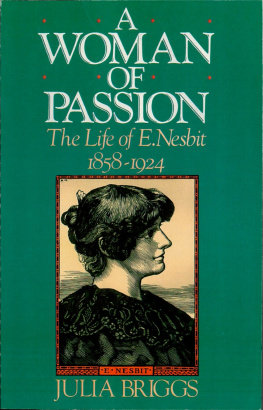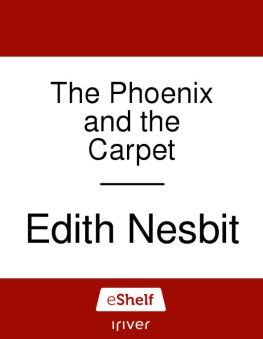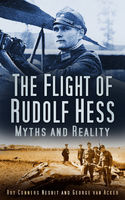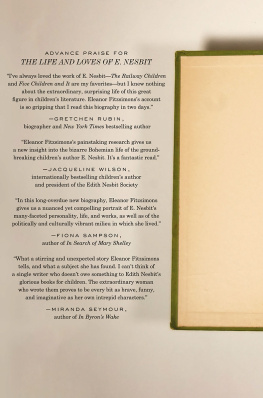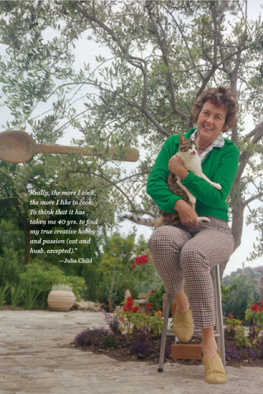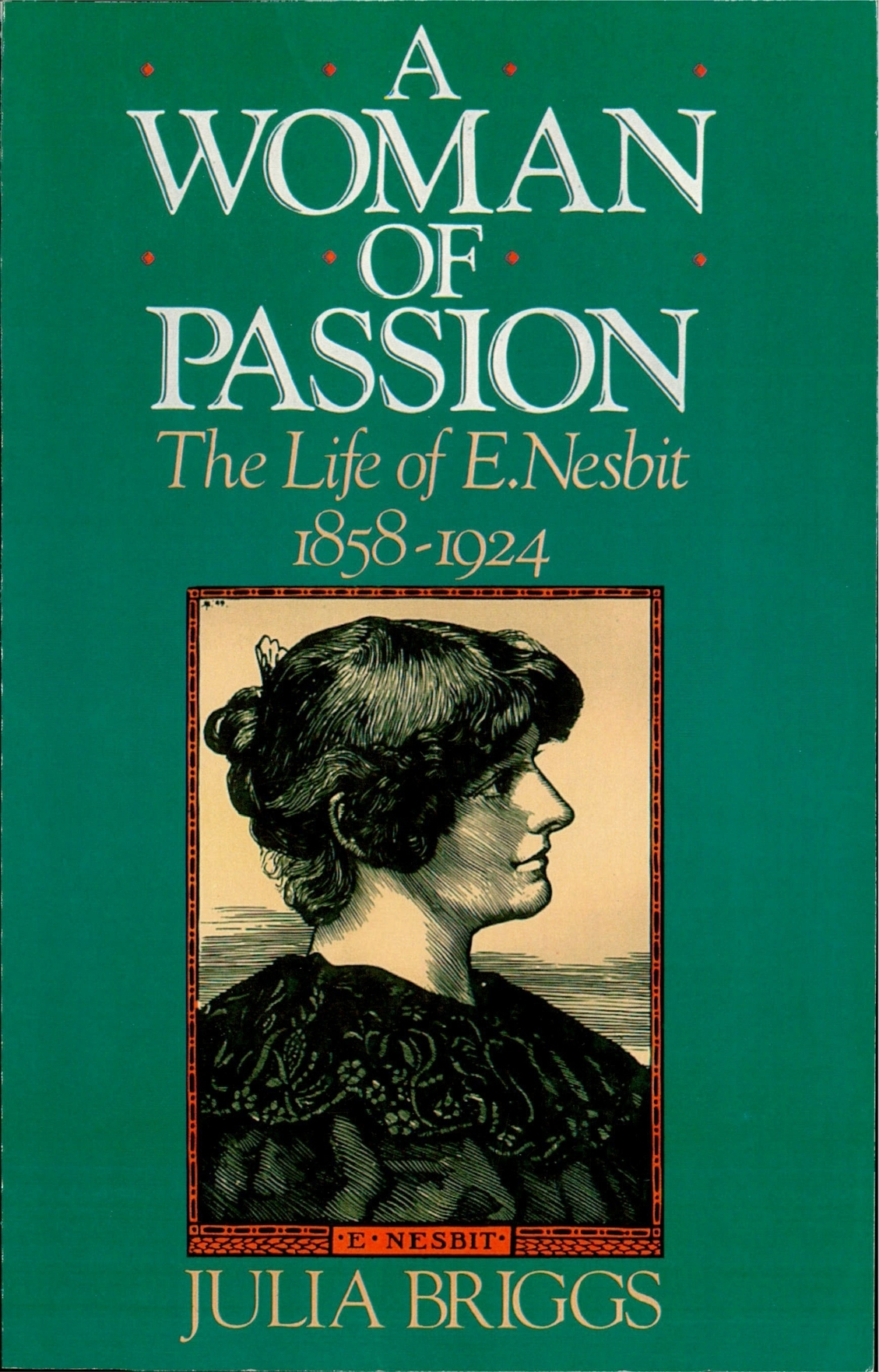ACKNOWLEDGEMENTS
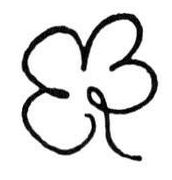
This is the second biography of Edith Nesbit to be written the first was Doris Langley Moores E. Nesbit, published in 1933 and, in a revised edition, in 1966. It was rightly regarded, then and later, as a reliable and finely written account. Mrs Langley Moore collected a mass of information from Ediths family and friends which she stored away with meticulous care, but she was unable to use a number of the more intimate details, and this in turn helped to obscure some of the essential outlines of her subjects life. With great generosity, Mrs Langley Moore passed on to me the material she had assembled, which included transcripts of letters to and by Edith, as well as many about her; from these a new and unfamiliar portrait of her began to emerge. In what follows the witnesses that Doris Langley Moore assembled speak for themselves, instead of being assimilated into the seamless narrative that biographers were formerly expected to provide. Yet though this account differs in most respects from its predecessor, it is often based on the same material, and could not have been written without the work so carefully carried out by Mrs Langley Moore. My largest debt remains to her.
The second collection of primary material that I have used belongs to Jocelyn Nixon, Mrs Paul Blands great-niece, who generously loaned it to me for the several years that this book has taken to write; I am very grateful for her continued help and kindness. Many other people have contributed information, books and advice over the ten years since its inception. I would particularly like to thank Margaret Taylor of the Eltham Society, who first introduced me to Mrs Nixon and who is herself something of an authority on E. Nesbit; Doris Ker recalled conversations that she had had with Mrs Paul Bland; Christine Powell, who has worked on the Nesbit family tree and passed on valuable information about Ediths family as well as notes made in the course of her own archival research, and Mavis Strange (nee Carter), who alone remembered E. Nesbit vividly, and gave me the woodcut reproduced on the jacket.
Some of the most exciting discoveries were made by John H. Davis at the Public Record Office. He also supplied me with copies of The Weekly Dispatch, guided me round Ediths South London and shared his expertise on the early history of socialism, as did Ross McKibbin. Further archival research was carried out by Jeremy Maule. Many others have contributed key pieces to the jigsaw puzzle; I would particularly like to thank the following for their help: Gillian Avery, for discussions about childrens books over many years; C. A. Boardman, archivist to King Edward VI School, Birmingham, for material on Richard Reynolds; Mrs Colquhoun, for information about her father Hugh Bellingham Smith, and for showing me a letter from her uncle, Eric Bellingham Smith; Mike Dudley of the Ashmolean Museum for help with photographs; Roger Lancelyn Green, for valuable bibliographical details; Zo Green, for reading and commenting on the typescript; Cathy Henderson, for research assistance; Michael Holroyd, for discussing, suggesting quotations and providing material on Shaw; John Jones of Balliol, for details of Richard Reynolds career; Daniel Kirkpatrick, for advice on bibliography; Geoffrey Kitchener, for the history of Halstead; Sharona Levy, for material on Olive Schreiner; John Maddicott, for information about Bower Marsh; Roger Pensom, for his reading of The Town in the Library...; William St Clair, for a crucial introduction; Louisa Smith, for information about H. R. Millar; Catherine Stoye, for showing me material belonging to her grandfather, H. G. Wells; Stephanie West, for help with Ediths irregular Latin; Helen Whitehouse, of the Ashmolean Museum, for advice on Egyptology (again!); Sarah Wimbush, of the National Portrait Gallery, for identifying the woodcut artist Robert Bryden, and other advice.
Keith Thomas allowed me to borrow his little cache of books once owned by Bower Marsh, from which I have reproduced a manuscript poem and a photograph the first fluttered out from the pages of one book, the second had been carefully pasted into another. E. Nesbits books (and occasionally manuscripts) have been found for me or lent to me by Anne Excell, Margarita Reeve and Jeanette White, but particularly by Ruth Pryor and Gwen Watkins. I have drawn on Gwens unique knowledge of childrens books at a number of points; she suggested several important sources to me and kindly read and commented on several chapters. The real bibliographical work has been carried out by Dr Selwyn Goodacre who assembled and checked the long list of E. Nesbits publications. This was a major task, and I am most grateful to him for undertaking it.
Much research depends on the kindness of librarians and I would like in particular to thank Barbara Ludlow, archivist at the Greenwich Local History Library, Mycenae Road, SE3, which has its own collection of Nesbit material; also the staff of the Bodleian, the British Library, Nuffield College Library, and Angela Raspin of the Library of Political and Economic Science at the London School of Economics. I would like to thank the following librarians for their help, and their libraries for permission to quote material in their possession: Cathy Henderson of the Harry Ransom Humanities Research Centre at Austin, Texas, for Ediths letters to Richard le Gallienne and material from the John Lane Papers; Gene Rinkel, Curator of Special Collections at the University of Illinois at Champaign-Urbana for Wellss correspondence with Edith and her family; Lola Szladits of the Berg Collection, New York Public Library for Ediths correspondence with her agents, and Garnetts reports as reader to Fisher Unwin. I would also like to thank the Butler Collection of Columbia University for permission to reprint the Shaw letter on pages 94 5; the Yale Library for permission to reprint the Wells letter, pp. 299 300; the Fabian Society for permission to reprint material from the Fabian Papers; A. P. Watt, acting on behalf of the Executors of the Estate of H. G. Wells, for permission to use published and unpublished material by H. G. Wells; the Trustees of the British Museum, the Governors and Guardians of the National Gallery of Ireland, and the Royal Academy of Dramatic Art for permission to use published and unpublished material by Bernard Shaw. I am also grateful to the Mary Evans Picture Library, to Dr. M. J. Wells and the Fogg Art Museum at Harvard for Illustrations.
Finally I would like to thank Richard Cohen, ideal editor and publisher, for giving the book and its author his fullest attention at every stage, and Stephanie Darnill for her careful copy editing. I have had the best of readers in Malcolm Godden, whose contribution cannot easily be measured or repaid. My warmest thanks are due to my family, who have shown great patience with my long obsession, particularly my husband Robin who has read every draft and rescued chapters given up for lost no thanks could be adequate; also to Jon who took photographs, and Simon who made the index.
BIBLIOGRAPHY
Compiled by Selwyn Goodacre
1885
The Prophets Mantle (in collaboration with Hubert Bland, under the pseudonym Fabian Bland). Henry J. Drane & Co., London, pp. vi, 322; Bedford Clarke, Chicago, 1889. Reprinted 1888, 1889.
1886
Spring Songs and Sketches ; Summer Songs and Sketches ; Autumn Songs and Sketches ; Winter Songs and Sketches. Illustrated books of verses, selected and arranged by E.N. and Robert Ellice Mack. Griffith, Farran, Okeden & Welsh, London; E.P. Dutton, New York. (Produced and printed by Ernest Nister, Nuremberg.) Each contains poems by E.N.

